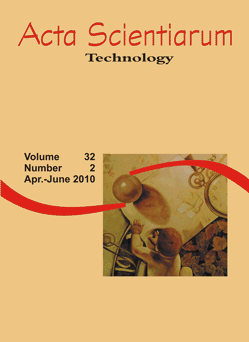<b>Simulation of a gas pipeline pathway integrating remote sensing data and geografic information systems</b> - doi: 10.4025/actascitechnol.v32i2.1133
DOI:
https://doi.org/10.4025/actascitechnol.v32i2.1133Keywords:
natural gas vehicle, GIS, decision making, digital elevation modelAbstract
The use of decision suport tools in Geographic Information Systems (GIS) has assisted in applications areas such as impact, suitability and viability analysis. This work presents an example of the application of these tools for the analysis of gas pipeline pathway connecting a refinery to three cities in the region of Campinas, São Paulo State. Land use and digital elevation model (DEM) were used as variables. The processing and analysis of spatial information were done using GIS IDRISI. The first approach used a cost surface to determine the least cost route. The pathway obtained considered in the majority areas of pastures and with slope of up to 15%. The second approach was based on multiple criteria analysis balancing factors such as distance, slope and land use. The multiple criteria analysis was influenced by land use; however, the slope and the distance between the cities are the basic factors in tracing the pathway, reflecting the lowest cost. This result constitutes an important subsidy for decisions on the best alternative for gas pipeline pathway, allowing a more rational and less subjective choice.Downloads
Download data is not yet available.
Downloads
Published
2010-07-12
How to Cite
Mercante, E., & Antunes, J. F. G. (2010). <b>Simulation of a gas pipeline pathway integrating remote sensing data and geografic information systems</b> - doi: 10.4025/actascitechnol.v32i2.1133. Acta Scientiarum. Technology, 32(2), 171–178. https://doi.org/10.4025/actascitechnol.v32i2.1133
Issue
Section
Photogrammetry/Remote Sensory
License
DECLARATION OF ORIGINALITY AND COPYRIGHTS
I Declare that current article is original and has not been submitted for publication, in part or in whole, to any other national or international journal.
The copyrights belong exclusively to the authors. Published content is licensed under Creative Commons Attribution 4.0 (CC BY 4.0) guidelines, which allows sharing (copy and distribution of the material in any medium or format) and adaptation (remix, transform, and build upon the material) for any purpose, even commercially, under the terms of attribution.
Read this link for further information on how to use CC BY 4.0 properly.











8.png)




